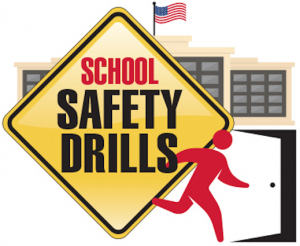Lock-Down Drills at FMSL

Schools should plan for the rare possibility of an intruder as part of a comprehensive crisis/emergency preparedness effort; however, the nature and extent of those preparedness activities should be based upon a risk assessment of the crisis events a given school is most likely to confront.
A Lock Down Drill is scheduled for February 12, 2019. This emergency procedure at FMSL involves staff –
- Sweeping and clearing hallways
- Turning off classroom lights
- Locking doors
- Sheltering with children in our agreed upon secure areas
- Taking roll
- Waiting for the all clear
We recognize that this drill in particular can sometimes cause anxiety and concern for parents and guardians, students, and educators too. For the adults, being familiar the procedure and ones responsibilities within that process can bring assurance and comfort. Practicing can prepare and be of comfort to the children with the fact that their teachers, parents and guardians, and the school have a plan, and therefore help them feel more in control.

While we make every effort to give clear and careful explanations so as to minimize worries, we know that opportunity to talk with parents about the circumstances that necessitate these drills can help children immensely too. Please take some time to read this and reach out to your student’s teachers should you have questions about this particular drill.
GENERAL STRATEGIES FOR TALKING WITH STUDENTS:
- Emphasize listening to authority figures for safety.
- Practicing means being prepared. Just like we practice fire drills to know what to do in case there’s a fire, we are now going to practice being safe when there is trouble around.
- This is a “just-in-case” plan. Like wearing a helmet when riding bikes or knee pads when we skateboard. We don’t plan to fall, but if we do, we’ll be protected.
DEVELOPMENTAL AND MENTAL HEALTH CONSIDERATIONS
- Children model their reactions on adult behavior, so staff should be mindful to breathe and maintain their composure as that will inspire calm and confidence in students.
- It is critical that participation in drills be appropriate to individual development levels, and take into consideration prior traumatic experiences, special needs, and personalities.
- Adults should monitor participants during the drill and use their best judgement to determine whether the group can handle waiting for the all clear or halt the drill early if necessary.
Age appropriate ways to explain this drill to the students – adapted from Judith Simon Prager, “Talking to Kids about a ‘Lockdown’”
“Every day, we do things to keep ourselves safe. Let’s think of some examples. What do you put on before you start biking? What do you do before walking across the street? Another way we stay safe is by practicing for things that probably won’t happen but it is good to be prepared for just in case. One way we do this at school, for instance, is by practicing fire drills and earthquake drills. Practice helps us know what to do just in case of an emergency.
Another kind of situation we can prepare for is when we need to keep you safe from a stranger while you are at school. This would probably never happen but just like a fire drill, we can practice our response so we are prepared.
We are all here to keep you safe. Practice means we are prepared and can feel confident that we all know what to do just in case. Having a plan like this and practicing what to do in a shelter drill means that we don’t have to worry about these concerns and instead we can focus on having fun and learning at school.”
Toddler and EC Directions
- Stop what you are doing
- Go to our classroom’s Shelter Spot (or join a trusted adult that is calling you)
- Make Silence
Elementary Level Directions
“The acronym PAL can help
- P is for PAUSE: First, pause and take a deep breath. Breathing helps your mind work.
- A is for ADULT: Wherever you are on campus, find a trusted adult. If you are in the classroom, stay there and gather in the classroom Shelter spot. If you are outside, look for the teacher or other adult closest to you to tell you what to do and where to go.
- L is for LISTEN: Listen to the adult’s instructions. The adult will know what to do and will tell you. This is trickier than a fire drill because depending on where you are, you won’t always go to the same place each time. You will know what to do if you listen. Also during this time, the teachers will lock the doors to their classrooms. When everything is safe, the adult will tell you that everything is all clear and we can go back to our regular school day.”

RESOURCES:
NASP (National Association of School Psychologist) article notes on armed assailant drills…
http://www.nasponline.org/Documents/Research%20and%20Policy/Advocacy%20Resources/BP_Armed_Assailant_Drills.pdfSocial Story